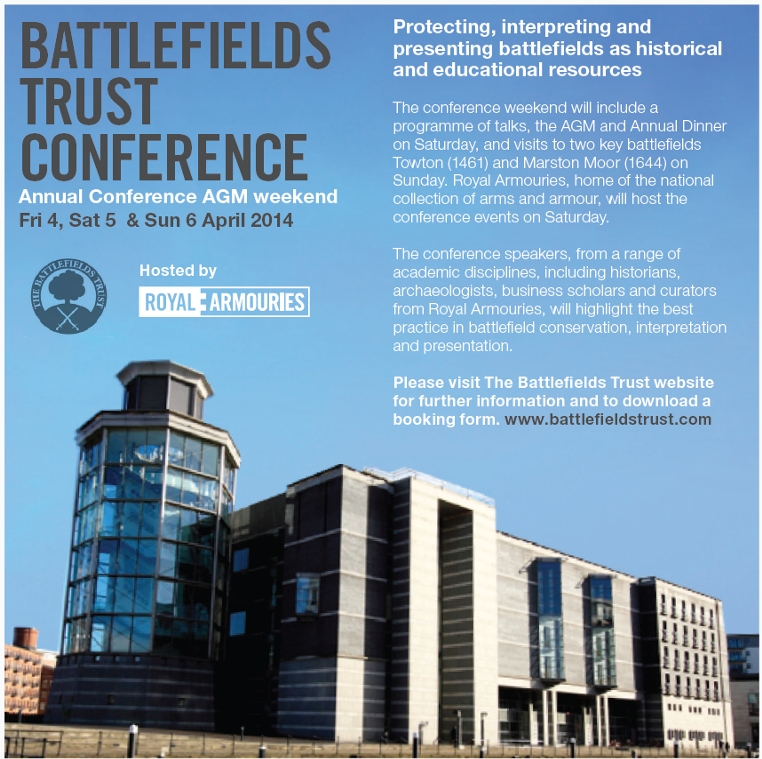BATTLEFIELD VISITS
Bramham Moor 19 February 1408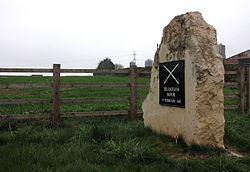
This battle on 19 February 1408 was the final battle in the Percy Rebellion of 1402 –1408, against the usurper King of England, King Henry IV. This was Percy’s third revolt. He gathered together an army of lowland Scots and loyal Northumbrians and marching south once more toward York. At Bramham Moor, south of Wetherby, his army was met by a force of local Yorkshire levies and noble retinues which had been hastily assembled to meet the force, led by the High Sheriff of Yorkshire Sir Thomas Rokeby. Percy’s army was defeated and he was killed. The battlefield is not on the battlefield register and is under threat from encroachment.
Towton 29 March 1461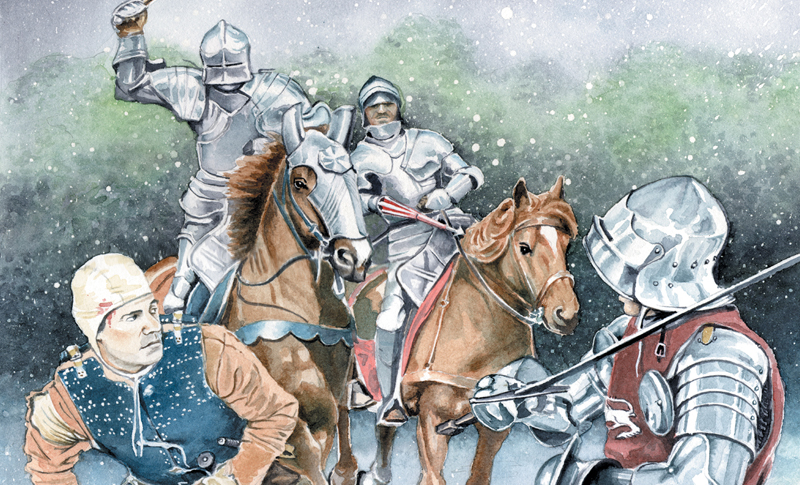
The Battle of Towton is claimed to be the largest and longest battle fought on British soil. Towton was of huge significant in both military and social terms. The battlefield is also a key location for the study of battlefield conservation. It is a highly significant archaeological site, revealing evidence of both the arrow storm and the bodies of some of those killed. The extent of the artefacts around this registered battlefield places it at risk from a range of threats. The visit will be an excellent opportunity to see how the local battlefield society has developed and presented the interpretation of the battle.
Adwalton Moor 30 June 1643
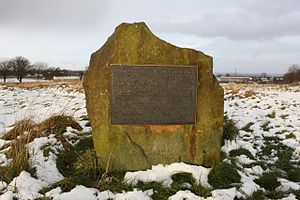 This English Civil War battle is a registered battlefield lying within the boundary of the city of Leeds. It is under threat from encroachment by development. The Earl of Newcastle, the Royalist Commander, was marching on Bradford (which was Parliamentarian in sympathy) with 10,000 men. Fairfax, the Parliamentary commander, had 3,000-4,000 men in Bradford. However, despite his inferior numbers, Fairfax came to intercept the Royalist army as Bradford was ill-prepared to resist a siege. The strong Royalists defeated the Parliamentarians. The battle was significant as it consolidated Royalist control of Yorkshire.
This English Civil War battle is a registered battlefield lying within the boundary of the city of Leeds. It is under threat from encroachment by development. The Earl of Newcastle, the Royalist Commander, was marching on Bradford (which was Parliamentarian in sympathy) with 10,000 men. Fairfax, the Parliamentary commander, had 3,000-4,000 men in Bradford. However, despite his inferior numbers, Fairfax came to intercept the Royalist army as Bradford was ill-prepared to resist a siege. The strong Royalists defeated the Parliamentarians. The battle was significant as it consolidated Royalist control of Yorkshire.
Marston Moor 2 July 1644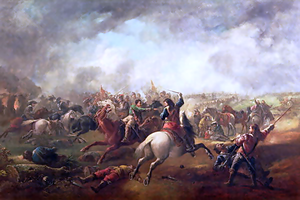
The combined forces of the English Parliamentarians under Lord Fairfax and the Earl of Manchester and the Scottish Covenanters under the Earl of Leven defeated the Royalists commanded by Prince Rupert of the Rhine and the Marquess of Newcastle. This battle is one of the decisive actions of the war, resulting in the Royalists abandoning the North. The battlefield is on the English Heritage register, and has been under threat from metal detecting. One of the land owners is the Trust’s local representative on the battlefield.
PROGRAMME
FRIDAY 4TH APRIL 2014: OPTIONAL BATTLEFIELDS TOUR
2.00-5.00pm To the battlefields of Adwalton Moor (1643) and Bramham Moor (1408) guided by Frank Baldwin the Chairman of the Battlefields Trust. Car RV outside the the Holiday Inn Hotel at 1.30 p.m. – Option to Pick up individuals at Leeds Railway Station at 14.00.
5.00pm Check in opens at the Holday Inn
5-8.00 pm evening meal Holiday Inn
8.30-10.30 pm Battlefield Quiz at the Holiday Inn Armouries Hotel
SATURDAY 5TH APRIL 204: JOINT CONFERENCE BETWEEN THE BATTLEFIELDS TRUST AND THE ROYAL ARMOURIES (BURY THEATRE, ROYAL ARMOURIES, ARMOURIES DRIVE, LEEDS, LS10 1LT) ON BEST PRACTICE IN BATTLEFIELD CONSERVATION, TO BE FOLLOWED BY THE BATTLEFIELDS TRUST担 ANNUAL GENERAL MEETING.
Entry to the Royal Armouries itself is from 10 am and is free.
10.00am: arrival, registration and coffee.
10.15am ・ 10.45am: Introduction and Welcome from Dr Edward Impey, Director of the Royal Armouries and Scene Setting by Frank Baldwin, Chairman of the Battlefields Trust.
10.45am ・ 11.30am: Speaker from the Bosworth Visitors Centre/Leicestershire County Council – Bosworth as a Case Study for the Tourism and economic Aspect of Battlefields.
11.30am ・ 12.15pm: Dr Karen Watts, Senior Curator of Armour and Art at the Royal Armouries, The Battle of Agincourt: new perspectives for the Agincourt 600 Exhibition・.
12.15pm ・ 1.30pm: Lunch and opportunity to tour the Armouries.
1.30pm ・ 2.15pm: Dr Glenn Foard FSA, Reader in Battlefield Archaeology at the University of Huddersfield, [topic to be confirmed].
2.15pm ・ 3.00pm: Dr Tony Pollard, Senior Lecturer in History/Battlefield Archaeology at the University of Glasgow ・ The Archaeology of the Western Front・.
3.00pm ・ 3.45pm: The Development Officer Project ・ final report (Julian Humphrys).
3.45pm: Closing remarks followed by tea.
4.00pm: BT Annual General Meeting. Non-members are welcome to attend, but may not vote, speak or propose motions. There is a separate agenda for this meeting for Trust members. Anyone joining the Trust on the day will be able to participate as a full member.
7.30 pm Battlefields Trust Dinner at the Royal Armouries Leeds
SUNDAY 6TH APRIL: BATTLEFIELD TOUR TO TOWTON AND MARSTON MOOR
9.00 am Depart hotel for Battlefield tour.
10.00am Battlefield Tour Towton 1471 (RV for non residential delegates Towton Battlefield Centre)
12.30-13.30pm Lunch
2-4pm Battlefield tour of Marston Moor
4.30 ETA Leeds railway station for delegates departing by Rail
HOTEL
Holiday Inn Express, Leeds City Centre Armouries, Armouries Drive, Clarence Dock, Leeds, LS10 1LE
Tel number : 0113 380 4400
DRESS CODE
The dress code for the conference is casual, except for the Battlefields Trust Dinner when we hope that gentlemen would wear a jacket and a battlefields trust tie. Delegates attending the battlefields tours should bring suitable footwear and waterproof clothing.
CARS
There is a public car park next to the Holiday Inn. The Trust is willing to pay mileage rate for delegates willing to offer spaces in their car to others for the battlefield tours.
btagm14_conference_application_form
